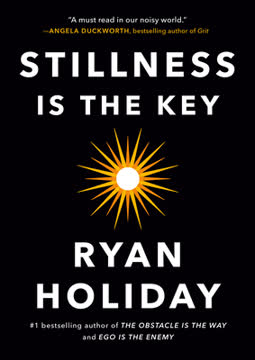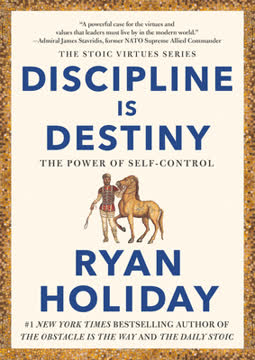Key Takeaways
1. The media landscape is driven by manipulation and deception
Blogs need traffic, being first drives traffic, and so entire stories are created out of whole cloth to make that happen.
Media manipulation is rampant. The modern media landscape, particularly online, is built on a foundation of deception and manipulation. PR professionals, marketers, and even journalists themselves engage in tactics designed to generate traffic and attention, often at the expense of truth and accuracy. These tactics include:
- Creating fake controversies
- Planting stories with bloggers
- Leveraging anonymous sources
- Manufacturing outrage
The attention economy incentivizes bad behavior. In a world where clicks equal revenue, the pressure to produce content that spreads quickly outweighs the responsibility to report accurately. This creates a feedback loop where manipulators feed sensational stories to hungry bloggers, who then amplify and distort them further.
2. Blogs prioritize traffic over truth, leading to a cycle of misinformation
Getting it right is expensive, getting it first is cheap.
Speed trumps accuracy. In the race to be first, blogs often sacrifice fact-checking and verification. This leads to a cycle where:
- Rumors are reported as facts
- Unverified claims spread rapidly
- Corrections come too late to matter
The economics of blogging encourage this behavior. Many bloggers are paid based on the traffic they generate, not the quality or accuracy of their reporting. This creates a perverse incentive structure where:
- Sensational headlines are rewarded
- Nuanced reporting is penalized
- Fact-checking is seen as a luxury
The result is a media ecosystem that values speed and virality over truth and substance, perpetuating a cycle of misinformation that's difficult to break.
3. Sensationalism and controversy are the currency of online media
If it doesn't spread, it's dead.
Emotional content spreads faster. Studies have shown that content that evokes strong emotions, particularly anger, is more likely to be shared and go viral. This leads to a media landscape where:
- Outrage is manufactured
- Nuance is sacrificed
- Complex issues are oversimplified
The "viral" imperative shapes content. In the pursuit of traffic, blogs and online media outlets craft their content to maximize shareability. This results in:
- Clickbait headlines
- Controversial takes on mundane events
- A focus on conflict and drama
The consequence is a media environment that amplifies the most extreme voices and perspectives, drowning out more measured and thoughtful discourse.
4. The "iterative journalism" model sacrifices accuracy for speed
Online, we often publish first and edit later.
The "publish first, verify later" approach. Many online media outlets have adopted an "iterative" model of journalism, where stories are published as they develop, often before key facts are verified. This leads to:
- Incomplete or inaccurate initial reports
- A constant stream of updates and corrections
- Confusion among readers as stories change
The illusion of transparency. Proponents argue that this model allows for greater transparency in the reporting process. However, it often results in:
- The spread of misinformation before corrections can be made
- A blurring of the line between fact and speculation
- A loss of credibility for media outlets
This approach prioritizes speed over accuracy, contributing to an information ecosystem where the first version of a story, even if incorrect, often becomes the prevailing narrative.
5. Corrections and retractions are ineffective in the digital age
Corrections not only don't fix the error—they backfire and make misperception worse.
The persistence of misinformation. In the digital age, the initial version of a story often spreads far wider and faster than any subsequent corrections. This leads to:
- False information continuing to circulate long after it's been debunked
- Readers remembering the original, incorrect version of events
- A general erosion of trust in media
The backfire effect. Psychological research has shown that corrections can sometimes reinforce the original, incorrect belief. This occurs because:
- Corrections reintroduce the false information
- People tend to seek out information that confirms their existing beliefs
- The act of correction can be seen as an attack on one's worldview
As a result, the traditional journalistic practice of issuing corrections and retractions is often ineffective in the digital media landscape, allowing misinformation to persist and spread.
6. Online media serves as a modern public shaming and degradation tool
Blogs are vehicles from which mass media reporters—and your most chatty and "informed" friends—discover and borrow the news.
The digital pillory. Online media, particularly social media and blogs, have become modern tools for public shaming and degradation. This manifests in:
- Viral outrage campaigns
- Online harassment and bullying
- The rapid spread of damaging rumors or accusations
The amplification effect. The interconnected nature of online media means that local incidents or minor controversies can quickly become national or even international news. This leads to:
- Disproportionate consequences for perceived transgressions
- A culture of fear around public missteps
- The erosion of nuance and context in public discourse
The result is a media environment that often resembles a digital mob, ready to pounce on the latest target of outrage, with little regard for proportionality or due process.
7. The blurred line between real and fake news creates a dangerous "unreality"
Welcome to unreality, my friends. It's fucking scary.
The collapse of shared reality. The proliferation of fake news, combined with the erosion of trust in traditional media sources, has created a situation where it's increasingly difficult to distinguish fact from fiction. This results in:
- A fragmented information landscape
- The rise of conspiracy theories and alternative facts
- Increased polarization as people retreat into information bubbles
The manipulation of perception. Bad actors, from trolls to state-sponsored disinformation campaigns, exploit this confusion to shape public opinion. Tactics include:
- Creating and amplifying fake news stories
- Using bots and sock puppets to manipulate social media
- Exploiting algorithmic biases in content recommendation systems
The consequence is a media environment where reality itself becomes malleable, making it challenging for citizens to make informed decisions and undermining the foundations of democratic discourse.
8. Readers must approach online content with skepticism and discernment
How to Read a Blog: An Update on Account of All the Lies
Critical reading skills are essential. In the current media landscape, readers must develop a skeptical and discerning approach to online content. This involves:
- Questioning sources and motivations
- Seeking out multiple perspectives on important issues
- Verifying claims independently when possible
Understanding media manipulation tactics. Readers should familiarize themselves with common tactics used to manipulate online narratives, such as:
- Recognizing clickbait headlines
- Being wary of anonymous sources
- Understanding how emotional appeals can be used to bypass critical thinking
By developing these skills, readers can better navigate the complex and often deceptive world of online media, becoming more informed and less susceptible to manipulation.
9. The current media ecosystem is unsustainable and requires systemic change
All aspects of our society suffer because of these economics.
The need for new models. The current economics of online media, driven by advertising revenue and pageviews, are fundamentally flawed and unsustainable. Possible solutions include:
- Subscription-based models that prioritize quality over quantity
- Blockchain-based systems for verifying and tracking the provenance of news
- Increased media literacy education to create more discerning consumers
Regulatory and cultural shifts. Addressing the problems in the media ecosystem will require changes at multiple levels:
- Updated laws and regulations to address digital-age challenges like fake news and data privacy
- Cultural shifts that value accuracy and depth over speed and sensationalism
- Technology solutions to help verify information and combat misinformation
The current media landscape, with its emphasis on manipulation, sensationalism, and speed over accuracy, is causing significant harm to public discourse and democratic institutions. Addressing these issues will require concerted effort from media professionals, technologists, policymakers, and citizens alike.
Last updated:
FAQ
What's Trust Me, I'm Lying about?
- Media Manipulation Exposed: The book reveals how modern media, especially blogs, can be manipulated for profit and influence. Ryan Holiday shares his experiences as a media manipulator, detailing the tactics he used to create news stories.
- Cultural Critique: It critiques the current state of journalism, emphasizing how sensationalism and the pursuit of clicks have degraded the quality of news.
- Personal Confession: Holiday provides a candid account of his role in shaping narratives and manipulating public perception, ultimately expressing regret for his actions and their consequences.
Why should I read Trust Me, I'm Lying?
- Insight into Media Dynamics: The book offers a behind-the-scenes look at how media operates today, making it essential for anyone interested in understanding modern journalism.
- Understanding Manipulation: Readers will learn about the tactics used by marketers and media manipulators, which can help them recognize and resist manipulation in their own media consumption.
- Cautionary Tale: Holiday's experiences serve as a warning about the dangers of misinformation and the ethical implications of media manipulation.
What are the key takeaways of Trust Me, I'm Lying?
- Media is Manipulable: The book emphasizes that the current media landscape is highly susceptible to manipulation, particularly by those who understand its mechanics.
- The Link Economy: Holiday introduces the concept where the value of a story is determined by its ability to generate clicks and links rather than its truthfulness.
- Consequences of Misinformation: The book discusses the real-world consequences of media manipulation, including public outrage and the potential for harm to individuals and organizations.
What are the best quotes from Trust Me, I'm Lying and what do they mean?
- “I am, to put it bluntly, a media manipulator—I’m paid to deceive.”: This quote encapsulates Holiday's role in the media landscape, highlighting the ethical dilemmas faced by those in public relations.
- “The economics of the Internet created a twisted set of incentives that make traffic more important—and more profitable—than the truth.”: This statement critiques the prioritization of clicks over journalistic integrity.
- “The manipulators are indistinguishable from the publishers and bloggers.”: This highlights the blurred lines between content creators and those who are supposed to report the news.
What are the nine tactics outlined in Trust Me, I’m Lying?
- Bloggers are Poor: This tactic involves providing incentives to bloggers, such as free products or payments, to ensure coverage of a story.
- Tell Them What They Want: Manipulators craft narratives that align with bloggers' biases or interests, making it easier for them to publish sensational stories.
- Just Make Stuff Up: Acknowledging that many bloggers do not verify their sources, manipulators can create false narratives that are easily accepted.
How does Ryan Holiday define a media manipulator in Trust Me, I’m Lying?
- Deceptive Practices: Holiday describes a media manipulator as someone who uses deception and manipulation to influence public perception and media narratives.
- Strategic Influence: The role involves understanding the vulnerabilities of the media system and exploiting them for personal or client gain.
- Ethical Dilemmas: The book raises questions about the morality of such practices, as they can lead to significant consequences for individuals and society.
What is the One-Off Problem mentioned in Trust Me, I’m Lying?
- Definition: This concept refers to the tendency of blogs to chase sensational stories that generate immediate traffic without considering the long-term implications.
- Impact on Content Quality: It encourages bloggers to prioritize short-term gains over the integrity of their reporting.
- Cycle of Misinformation: This problem perpetuates a cycle where misinformation spreads rapidly, as blogs compete for attention.
How does Trust Me, I’m Lying define iterative journalism?
- Definition: Holiday describes iterative journalism as a practice where stories are published quickly, often before they are verified.
- Consequences: This approach prioritizes speed over accuracy, leading to a proliferation of rumors and speculation.
- Critique: Holiday critiques this model for its lack of accountability and the way it undermines the public's trust in the media.
What role does snark play in the media according to Trust Me, I’m Lying?
- Definition: Holiday defines snark as a form of humor that often involves mocking or deriding individuals or situations.
- Impact on Public Figures: Snark can destroy reputations and reduce complex individuals to caricatures.
- Cultural Reflection: It reflects a broader cultural trend of cynicism and detachment.
How does Trust Me, I’m Lying illustrate the concept of unreality?
- Definition: Holiday describes unreality as a state where the lines between truth and fiction are blurred due to the manipulative practices of media.
- Examples: The book provides examples of how sensationalized stories can lead to real-world consequences, such as public outrage or political fallout.
- Cultural Implications: Living in a state of unreality can have detrimental effects on society, as it undermines informed decision-making and critical thinking.
What are the ethical implications discussed in Trust Me, I’m Lying?
- Ethics of Manipulation: Holiday reflects on his own role in manipulating media narratives and the ethical dilemmas that arise from such actions.
- Responsibility of Media: The book emphasizes the responsibility of media outlets to provide accurate and truthful information.
- Call for Change: Holiday advocates for a reevaluation of media practices and a return to journalistic integrity.
How does Trust Me, I’m Lying suggest readers approach media consumption?
- Critical Thinking: Holiday encourages readers to approach media with skepticism and to question the sources of information.
- Awareness of Manipulation: The book advises readers to be aware of the tactics used by media to manipulate narratives and generate clicks.
- Demanding Accountability: Holiday calls on readers to hold media outlets accountable for their reporting.
Review Summary
Trust Me, I'm Lying exposes the manipulative tactics used in online media and blogging. Holiday reveals how easily news can be fabricated and spread, driven by profit motives and page views. The book is divided into two parts: the first explaining media manipulation techniques, and the second exploring their societal impact. Readers found the content eye-opening and disturbing, praising Holiday's insights into the flaws of modern journalism. However, some criticized the repetitive nature of certain sections and questioned the author's motives for exposing these practices.
Similar Books










Download PDF
Download EPUB
.epub digital book format is ideal for reading ebooks on phones, tablets, and e-readers.













